
Lauren Freedman, president, The E-tailing Group
B2B buyers have an agenda with tasks they need to complete in a timely fashion. There are features that sellers can deploy from on-site search to express checkout that facilitate getting the job done fast. We will take a look at sellers who are employing these features, why these features matter, and their respective penetration seen from 2019’s B2BecNews Mystery Shopping survey, a recent review of 24 manufacturers. Additional research from surveys conducted of B2B buyers will provide context for some of the recommendations and their impact on shopper efficiency.
On-site search topped the list of features that were very important when selecting and subsequently reordering products. The ability to quickly find products, particularly when assortments are quite large, best serves the buyer.
In business-to-consumer commerce, finding the right product specifications are important to buyers,, but they may not be crucial to the purchase. In B2B, if a product doesn’t have the buyer’s needed specs, it doesn’t work and one can’t get the job done. Industrial equipment manufacturer Caterpillar’s ecommerce site is a perfect example of this. Buyers quickly pick their model or category and, from there, suggested part results are populated. This ensures the right choices are made in a timely fashion.
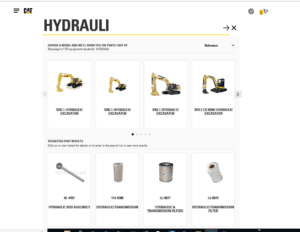
Caterpillar search page.
Computer manufacturers are well known for setting up filters based on individual needs. Buyers can refine by many different variables from screen size, process speed, operating system, price and memory. An array of choices are then presented and sorted by such criteria as relevance and low or high price points, facilitating further discovery.
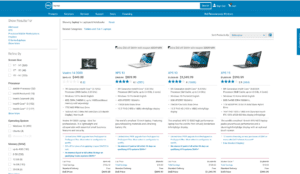
Dell search results
GM Parts Stores provides images in searches, giving buyers three fast ways to find the parts they need. The option to search by one’s vehicle, vehicle identification number or generic keywords serves as a starting point that covers the concerns of most buyers. It also ensures that shoppers make the right match, avoiding return hassles that can waste precious time.
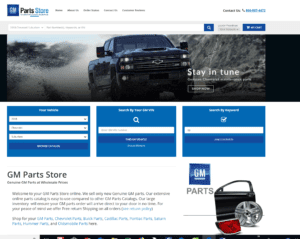
GM Parts search
Two other search-related features I wanted to touch on can be seen in the chart below, starting with auto-populated search terms. This allows buyers to quickly recognize text without having to know specifics and is smartly available on 63% of manufacturers surveyed. When images are presented upon hovering over search terms, they trigger visual recognition, which aids in the shopper’s efficiency.
Search Metrics |
Mystery Shopping Seller Penetration |
| Auto populated search | 63% |
| Image search | 29% |
| Guided navigation | 21% |
Source: B2BecNews Mystery Shopping of 24 Manufacturers, December, 2018
One example of a manufacturer that takes advantage of image search includes Microsoft.. Others who include such functionality are Johnson & Johnson’s Neutrogena, Procter & Gamble’s The Art of Shaving, Coca-Cola Refreshments USA Inc, Caterpillar Inc., Thermo Fisher Scientific Inc. and Motorola Solutions Inc.
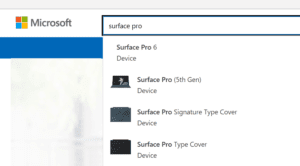
Microsoft image search
Content |
Mystery Shopping Seller Penetration |
| Profiling tools (beyond advanced search) | 38% |
Source: B2BecNews Mystery Shopping of 24 Manufacturers, December, 2018
Getting up to speed often means getting educated about a category under consideration. B2B buyers do their homework, with 38% researching at least four sites when making a first-time purchase. They are split in terms of their time investment; half dedicate at least two weeks when considering a first time purchase while the remainder spend less in pursuit of the perfect product or solution.[1]
Savvy sellers take steps to present guides and tools that foster exploration. Personalizing the experience can be best accomplished with profilers. Consider it a polished version of a Q&A, making it more practical and desirable for buyers to complete. Thermo Fisher Scientific’s website visitors can access product information via quick links off the company’s home page (see “shop all” products tab). When selecting a link such as stem cell research, visitors can learn about what culture medium is right for them, request information, register for workshops and access an array of culture media. It is an effective one-stop shopping and education destination.
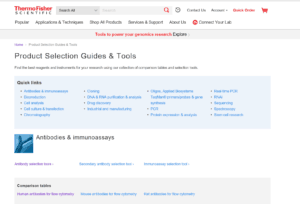
ThermoFisher product guides
Motorola Solutions guides its buyers through a step-by-step solution finder. The company’s 2-step approach starts with gathering information about one’s industry and basic details including number of locations, employees and departments. The second step inquires about segmentation, looking to understand what type of solution (from basic through custom) is appropriate. Results are returned by segment and also include top accessory recommendations. The site quickly launches a chat option and the ability to request a quote is prominent. The ability to assist in making a smarter selection via a more enjoyable interface should work well for their customer base.
Picture #6: Motorola_solutionfinder
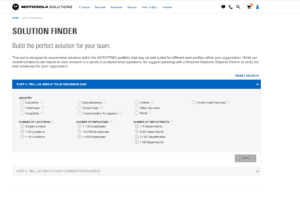
Motorola Solution Finder
Buying Efficiencies
Getting shoppers to make a definitive commitment is what drives conversion. When we asked B2B buyers how many people were typically involved in making a purchase, they shared that only 11% of B2B purchases were completed by one individual, so it’s clearly a multi-buyer affair[2]. Quick order is all about speed, allowing shoppers to enter a SKU number directly into on-site search for inclusion in one’s shopping cart; this has long been a time-saver adopted by B2B catalog companies.
For sellers who offer replenishment products, asking buyers to build shopping lists as they peruse a site, is smart business. This keeps product favorites top-of-mind where prospects can have a higher likelihood to purchase in the future. Saving one’s cart can be a lifesaver as interruptions are commonplace. This saved cart can be readily accessed by the buyer and/or shared with colleagues and others who have a stake in the final purchase.
Shopping cart |
Mystery Shopping Seller Penetration |
| Shopping lists | 46% |
| Save shopping cart | 33% |
| Automatic reorders/subscription | 35%* |
| Quick order | 38% |
Source: B2BecNews Mystery Shopping of 24 Manufacturers, December, 2018
*based on 23 sites
The biggest opportunity from a revenue standpoint may be automatic reorders or signing up for subscriptions. One in three of the manufacturers surveyed recognized its value. Putting these programs into place involves execution on the backend but it also means merchandising on the front end. Here GE does a nice job reinforcing the value of these programs with their “No Fees, No commitment, No hassle introduction. They enable a link to all SmartOrder items and provide further details for buyers looking to make a purchase including offering a 50% promotion and free shipping. This worry-free approach should resonate and hopefully reap new revenue streams for sellers.
Picture #7: GE_autodelivery
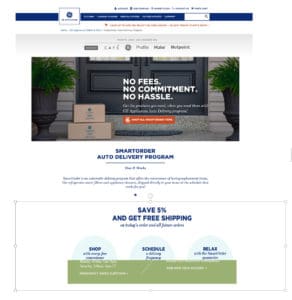
GE automatic delivery
Delivery
Being competitive also means addressing logistics. Buyers have heightened expectations that products can be delivered next-day and now even same-day as in the B2C world. This has also translated into the B2B realm placing additional pressure on sellers to accelerate deliveries.
The “need it now” nature of business is reflected in the over half of surveyed companies being able to deliver for next-day needs. Apple, already well-positioned with same-day delivery options for B2C buyers, extends those capabilities to its B2B customers as well.
Delivery |
Mystery Shopping Seller Penetration |
| Next day delivery | 58% |
| Same day delivery | 8% |
| Estimated delivery date | 17% |
Source: B2BecNews Mystery Shopping of 24 Manufacturers, December 2018
Returns
Returns have stringent rules in B2B relative to the B2C world, where securing a return authorization is standard fare. 59% of those retailers that accept returns require customers to get return authorization. Despite these demands, sellers can use technology to facilitate those returns. VWR brings the process to life as one of the sellers who offers online returns processing on its site. This exemplifies saving buyers time, and the process can result in improved loyalty in a situation where annoyance is quite commonplace.
Returns |
Mystery Shopping Seller Penetration |
| RMA required | 59%** |
| Online returns processing | 27%** |
Source: B2BecNews Mystery Shopping of 24 Manufacturers, December, 2018
**based on 22 sites
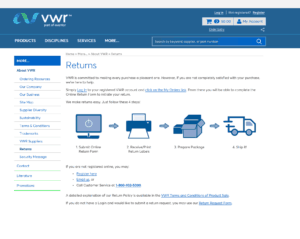
VWR online returns processes
B2B Buyer Efficiency Recommendations
- Site search should be powerful, allow for auto-populating of text and return relevant results
- Refinements and sort options should best reflect the categories being sold
- Make search a prominent part of the site experience
- Integrate tools into the buying experience that profile and guide buyers to most appropriate choices
- Allow shoppers to build shopping lists for future access
- Ensure shopping carts and can be saved and share its value via marketing
- Facilitate automated reordering when products are frequently replenished
- Monitor delivery options to remain competitive within your category
- Enable online returns processing as a convenience for buyers
[1] B2B Ecommerce Buyer Expectations Report based on 74 buyers, July, 2018
[2] B2B Ecommerce Buyer Expectations Report based on 74 buyers, July, 2018
Lauren Freedman is president of the e-tailing group, a research and advisory firm covering B2B and retail e-commerce.
Sign up for a complimentary subscription to B2BecNews, published 4x/week, covering technology and business trends in the growing B2B ecommerce industry. B2BecNews is published by Vertical Web Media LLC, which also publishes DigitalCommerce360.com, Internet Retailer and Internet Health Management.
Follow us on LinkedIn and be the first to know when new B2BecNews content is published.
Favorite